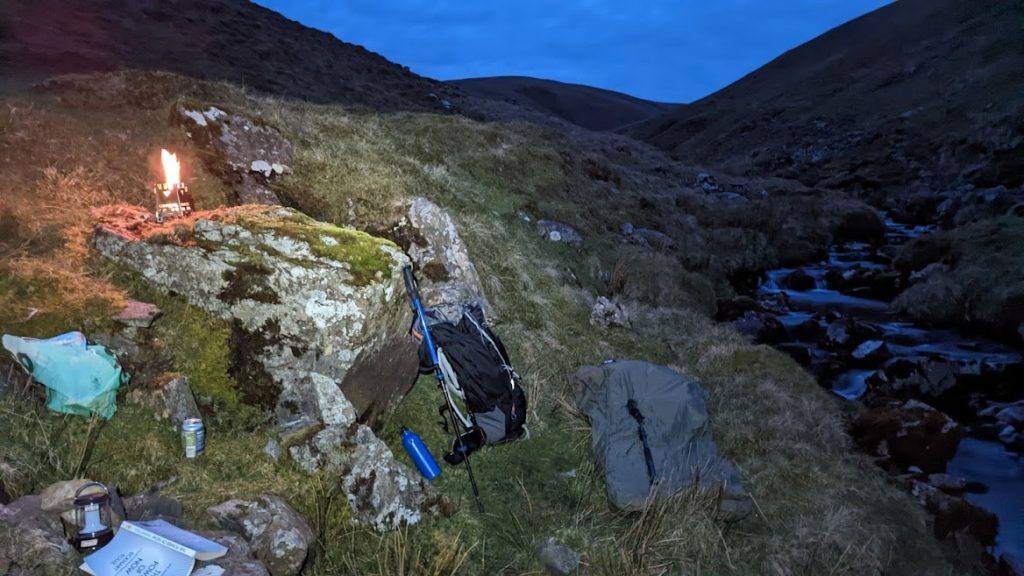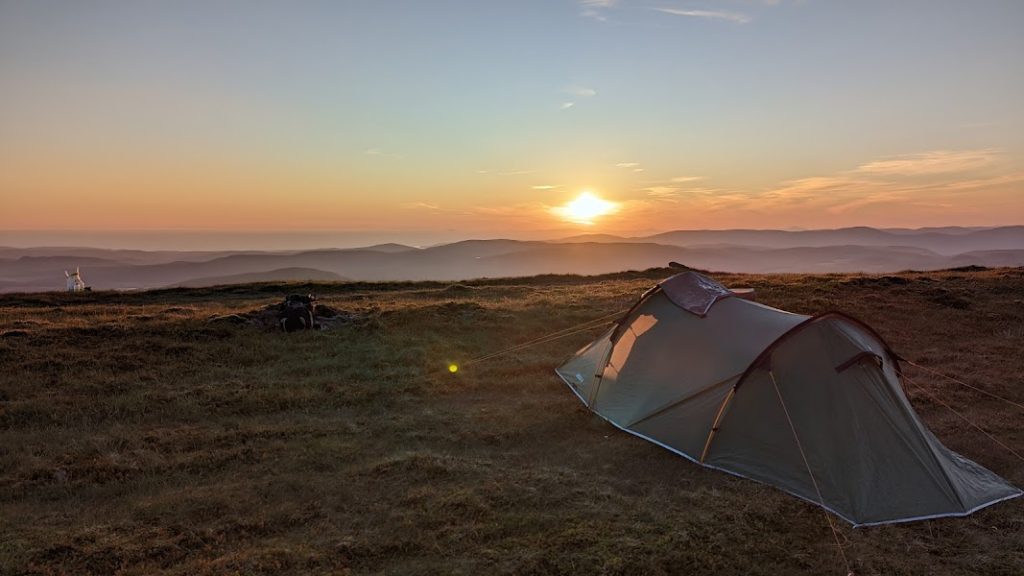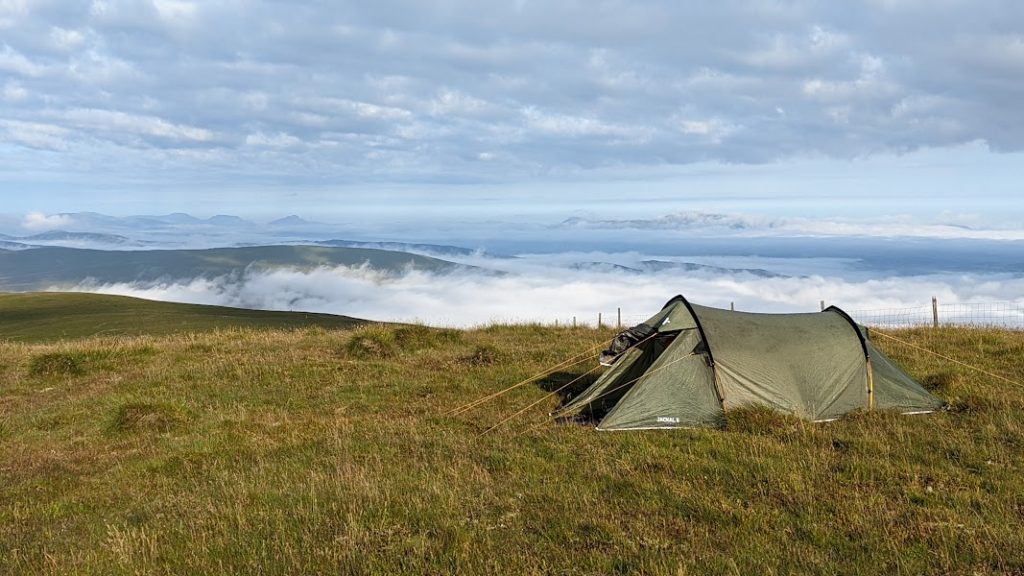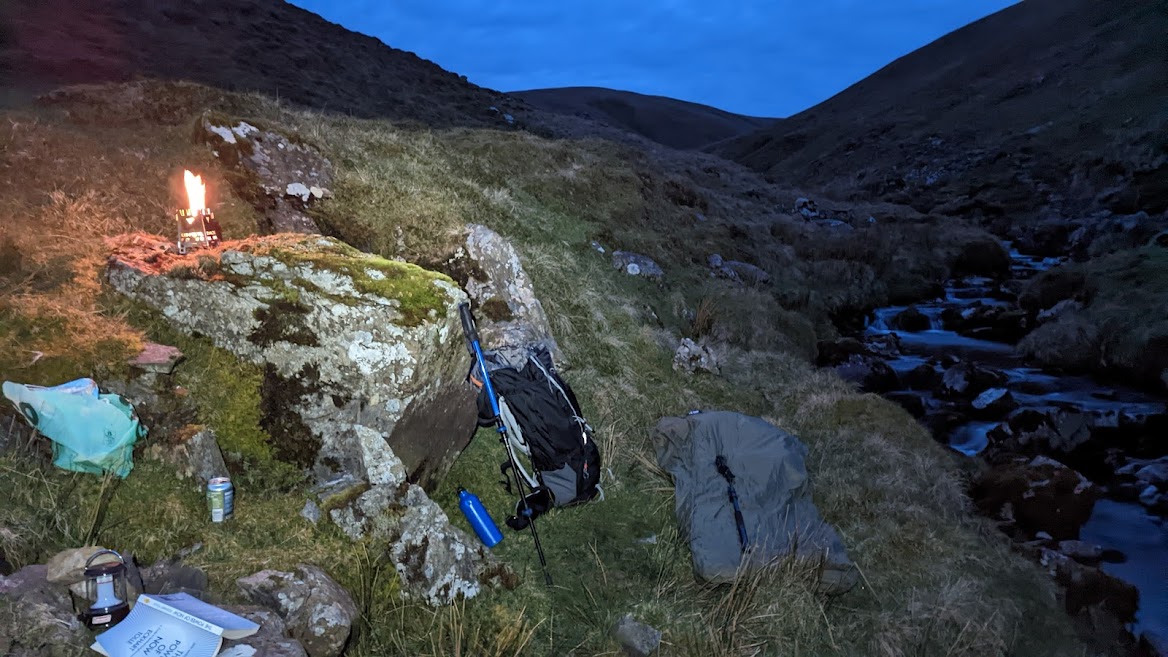Why Write This?
For more experienced campers reading this, I am sure you are thinking this title is a bit like asking how long a piece of string is. In some ways I agree. It can be tricky to know whether to use a bivvy, hammock or tent, as they all have their pros and cons depending on where and when they’re being used. I hope that this article will help outline the best times and places to use each, based on my own experience.
When doing some searching online, I noticed most articles tend to focus on each option separately before coming to a conclusion at the end. For the benefit of your eyes and sanity though, I’ll get straight to it and compare each option in different scenarios.
Where Are You Camping?
I’ve camped in a variety of places and each one lends itself to a different option. Let’s have a look at three.
Woodland
I thought this a good place to start as most of us have a forest nearby and I discovered recently that they also happen to be awesome places to camp. Unless you’re using a forest that is clinging to a steep hillside, the woodland environment lends itself well to all options. I would say that a hammock would be the best choice here though for the following reasons:
- The number of trees around makes it really easy to put the hammock up. Paired with a tarp, you are protected from the elements too. I find my hammock much quicker and easier to put up than my tent.
- Hammocks are really comfortable. You don’t have to worry about rocks or stones sticking into your back or puncturing your sleeping mat. Everybody is different, but I find the gentle sway of the hammock makes it easier for me to relax too.
- You stay off of the forest floor. This for me is one of the biggest advantages of the hammock over the other choices in a woodland. I haven’t used a bivvy sack in the woods and I don’t intend to. The forest floor is teeming with life, mostly in the form of mini beasts. The thought of them entering my sleeping system while I snooze isn’t one I relish. Even basic camping hammocks now almost always come with a built in mosquito net. You’ve basically got protection on all sides.
- You remain well hidden. The woods I have used are fairly close to London and I worry about being seen by a member of the public. A tent has a habit of standing out, whereas a hammock or bivvy bag makes it easier to remain anonymous.
- A hammock allows you to remain one with the forest. I can tend to feel a bit closed off from my surroundings in my tent as I can only see the walls of my inner. In the hammock, I was able to glance up through the forest canopy and out to each side every time I heard a deer bark. You can feel a bit more exposed, but my first woodland camp taught me that these fears are all irrational.

Narrow Valleys And Tight Spaces
I do love a mountain river, as it cascades its way down through a narrow valley it has worked hard to carve over thousands of years. They also make great places to spend the night. They’re often remote, provide a good water supply and have the bonus of providing a great soundtrack for the evening. I often use the sound of a mountain stream on my Alexa device at home when struggling to get to sleep! In this setting, I find the bivvy bag really comes into its own.
When walking in the wild Howgill Fells, I used my bivvy bag effectively to camp alongside the stream at the top of Cautley Spout. There were some flat sections beside it, but they wouldn’t have been large enough for my 2 man tent. The bivvy bag fit in with space to spare. An added bonus was that it took little more than a couple of minutes to set the whole system up. You can’t beat a bivvy bag for convenience.
They also work really well in both warm and cold conditions. I used mine during a dry but fairly cold April night and found it added considerable warmth to my sleeping bag. There is less space to heat than in a tent and I have read that it can raise the comfort level marked on your sleeping bag by as much as eight degrees celsius. In warm weather you can unzip it and have the head section open. Nothing beats laying there looking up at a clear starry night. If the weather is wet, you can easily erect a tarp shelter too, so that you can still cook, relax and remain dry. You’ll find the weight of these two combined will still be no more than that of a tent.

Mountain Summits
I know many of us a drawn to mountain summits for the views and sense of accomplishment. Making your stay a little longer is well worth it and I’ve found tents are the best option here.
You’re clearly in a remote place, so don’t have to worry too much about being seen. Any people you do meet are likely to be other outdoor enthusiasts. My experience has taught me that they’ll likely be more in awe of where you spent the night rather than thinking that you might be homeless!

Mountain summits are frequently windy and wet, so a tent offers a great escape from these. A hammock clearly won’t work with a distinct lack of trees. A bivvy bag suffers the problem of not offering much space and cooking can become a real pain in the bottom. Preparing food inside a tent isn’t the safest thing in the world, but I’ve found that my ventilated porch area works well enough and offers decent protection from the elements.
I have never used a bivvy bag on a mountain summit, but can see them working well on calm and warm evenings. We just don’t see these very often in the UK when over two thousand feet up.

What Is The Weather Doing?
It can be argued that each sleep system can work perfectly well in any weather condition. This is true to a degree, but some will need to be modified to make them comfortable. The table below will explore different conditions and how each system fares:
| Wet Weather | Windy Weather | Warm, Dry and Calm | Cold | Snowy | |
| Bivvy | Not ideal. Needs to be paired with a tarp. | Excellent in terms of noise as low to the ground. Limited space makes cooking and relaxing difficult though. | Excellent. No tarp needed and so very lightweight to carry. Can lay with views of the night sky. | Traps the heat well and will raise the temperature rating on you sleeping bag by up to eight degrees.. Just make sure it is ventilated to prevent becoming soaked by condensation. | Probably the warmest option when paired with a quality mat and sleeping bag. Could even use the fallen snow around you to add further insulation. |
| Hammock | Needs a tarp. | Needs to be paired with a tarp for protection. Otherwise can be exposed to winds. | As above. | Useless on its own. You’ll get very cold in anything less than around fifteen degrees celsius. An underquilt is needed, but it is easy to get this set up wrong. Watch this video to see how it’s done. | You’ll need a tarp to prevent the snow falling and melting on you. An underquilt is also essential to keep you warm. |
| Tent | Works perfectly | Good protection, but weaker structures could be damaged in stronger winds. Easy cooking options. | OK, but can get very warm with the heating of the sun and it is heavier to carry. You also can’t see the environment around you once inside. | Larger space means it will get cold inside. Excellent sleeping mat and sleeping bag required to keep you warm. | Offers good protection and a place of refuge on a long winter’s night. Need to be careful about snow collecting on the tent and weighing it down. |
| Winner | Tent. It needs no additional resources. | Tent. You can still cook and relax inside without getting cold in the wind chill. A hammock may be best in a forest as trees offer some protection from wind. | Hammock in a forest. Bivvy bag everywhere else. | Mmmmm. A close one between a bivvy or tent. A tent paired with a bivvy inside is excellent as you’ll be protected from wind chill and have the warming benefit of the bivvy. | Very close between a bivvy and tent. I’d personally still choose a tent, based on the sheltered space it provides before you go to sleep. |
So Which Is Best overall?
You may be fortunate and own all three options. In this case, hopefully the advice and comparisons above have helped you decide which one to use on your different trips.
If you have a more limited budget or are just starting out, then you may well still be wondering which one of the three is best to buy first. I started with a tent and would always say this is best, as it is the best suited to a range of settings and conditions. Yes it’s the most expensive option of the three, but it is obvious why. A hammock and bivvy bag offer a sleeping place only. Your tent will afford you this and also a space to relax and be comfortable on a longer stay, when the weather isn’t perfect. Happy camping!

